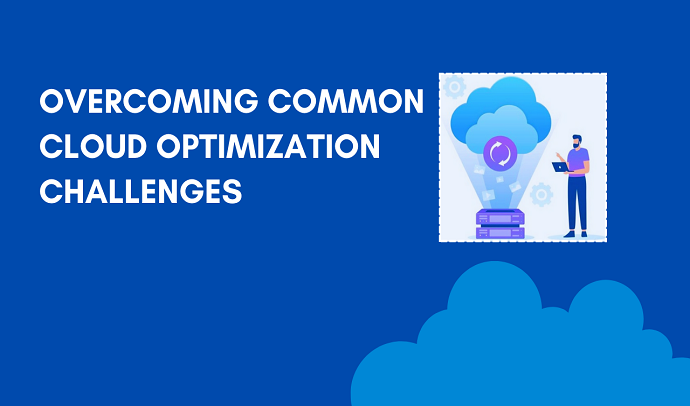Introduction
In today’s fast-paced digital landscape, businesses are increasingly turning to cloud computing to drive innovation, enhance scalability, and improve overall operational efficiency. While the benefits of cloud adoption are undeniable, organizations often encounter various challenges when it comes to optimizing their cloud resources. In this blog post, we’ll explore some of the common cloud optimization challenges and provide practical solutions to overcome them.

Challenge 1: Overspending on Cloud Resources
One of the primary challenges organizations face is overspending on cloud resources. Inefficient resource allocation and the lack of proper cost management can lead to ballooning cloud bills. To overcome this challenge:
Solution: Implement robust cost monitoring tools, regularly audit resource usage, and leverage cloud provider pricing models. Consider rightsizing instances and utilizing reserved instances to achieve cost savings without compromising performance.
Challenge 2: Inadequate Performance Optimization
Balancing performance and cost is a delicate act in cloud optimization. In some instances, organizations may compromise performance to cut costs, while others might overspend to ensure optimal performance.
Solution: Conduct performance profiling to identify bottlenecks and areas for improvement. Leverage auto-scaling features to dynamically adjust resources based on demand, ensuring optimal performance during peak times without unnecessary costs during lulls.

Challenge 3: Lack of Visibility and Monitoring
In a complex cloud environment, maintaining visibility into resource usage and performance is crucial. Without proper monitoring, identifying inefficiencies and addressing issues becomes challenging.
Solution: Implement comprehensive monitoring tools that provide real-time insights into resource utilization, application performance, and security. Set up alerts to proactively address potential issues and optimize resources based on actual usage patterns.
Challenge 4: Security Concerns in Optimization Strategies
As organizations optimize their cloud infrastructure, security considerations must remain a top priority. Adopting optimization measures without adequate security protocols can expose sensitive data and systems to potential threats.
Solution: Integrate security measures into the optimization strategy. Implement encryption, access controls, and regular security audits to ensure that optimization efforts do not compromise the integrity of the cloud environment.

Challenge 5: Resistance to Change
Adopting cloud optimization practices often requires a cultural shift within organizations. Resistance to change from teams accustomed to traditional IT infrastructure can hinder the successful implementation of optimization strategies.
Solution: Foster a culture of collaboration and education. Clearly communicate the benefits of cloud optimization, provide training programs, and involve teams in the decision-making process to ease the transition.
Conclusion
In conclusion, cloud optimization is a continuous journey that requires a strategic and proactive approach. By addressing common challenges head-on and implementing effective solutions, organizations can unlock the full potential of their cloud resources while ensuring cost efficiency, performance, and security.
For more insights and expert guidance on cloud optimization, visit CloudOpty.
